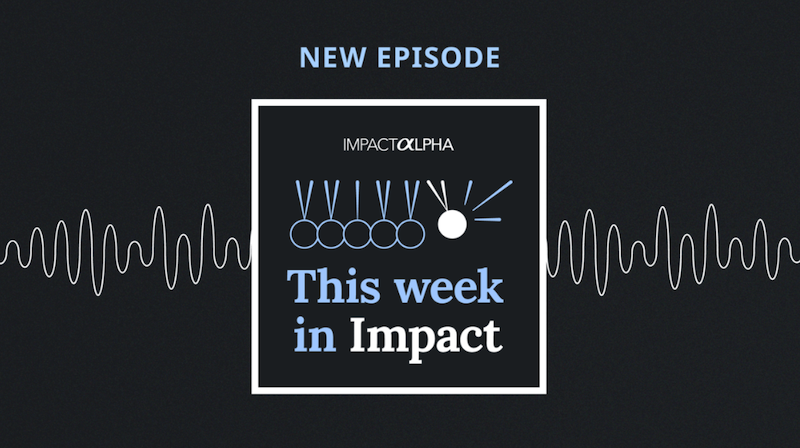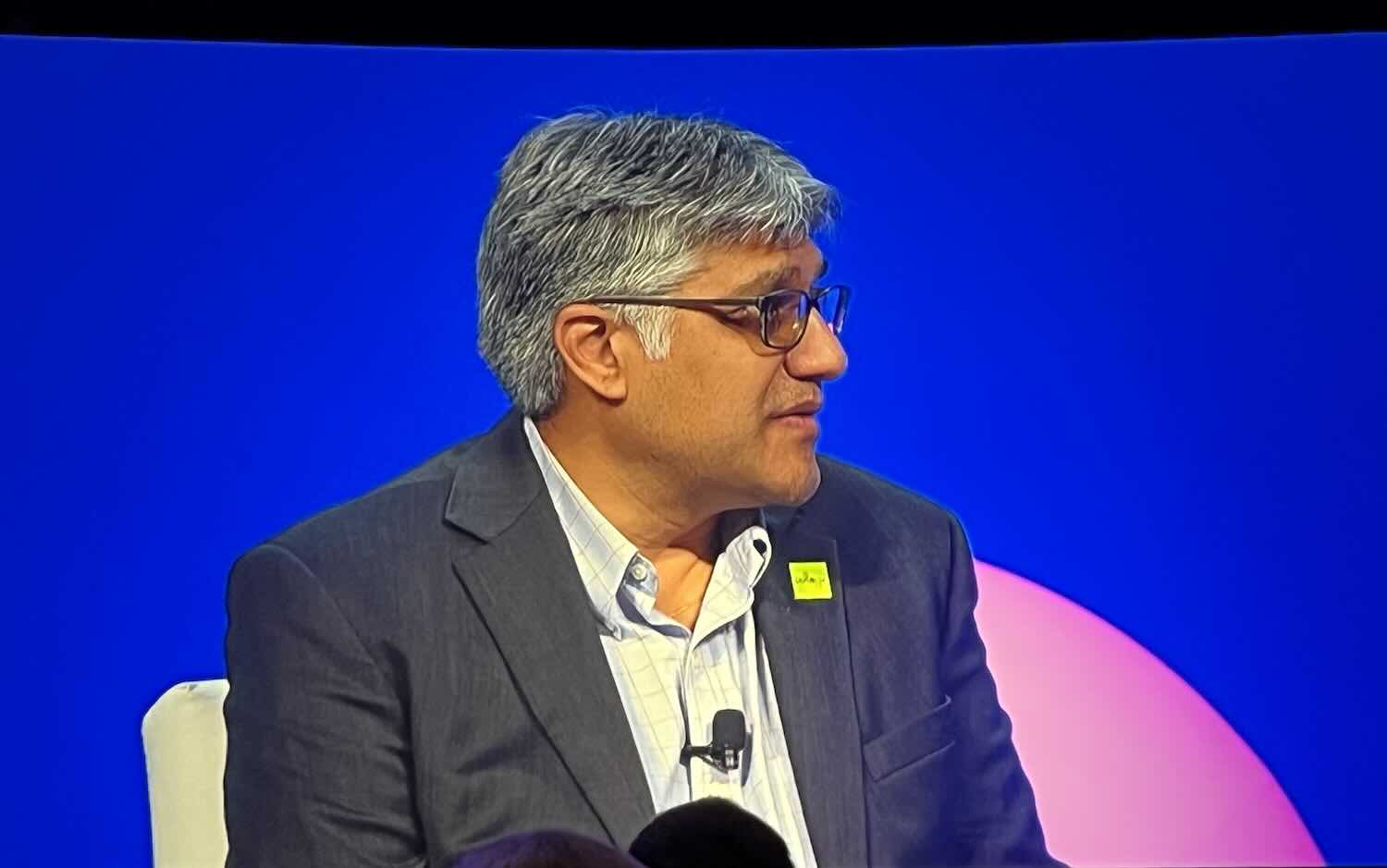ImpactAlpha, Oct. 1 – What got us here won’t get us where we need to go. Guidelines that govern global finance need to be rewritten to drive equity and justice throughout the economic system.
“Anti-blackness is the foundational architecture of the rules that maintain racial oppression and economic exclusion today, so we need a new approach to reassess and reimagine the rules, policies, and narratives that uphold it,” wrote Insight Center’s Anne Price, Jhumpa Bhattacharya and Dorian Warren.
“Centering Blackness and the experience of Black people is a framework that allows for possibilities of redemption, reconciliation, and transcendence,” they say. “It allows us to envision and build a world where anti-blackness does not exist and work toward tangible solutions to benefit all Americans.”
Agents of Impact came together on ImpactAlpha’s Call No. 23 to call out ways in which racism distorts markets, masks investment risks and drives economic injustice and poor social outcomes.
Co-host Transform Finance dissected examples in its new report, How investments drive injustice and what investors can do about it. “There are racist structures that are baked within capital,” said Transform Finance’s Andrea Armeni. “What would it mean to look at every investment through the lens of racial justice?” The report identifies racialized disparate outcomes of investments in healthcare, education, criminal justice and other sectors. A key indicator: low-quality jobs, which are disproportionately held by people of color, especially women.
Racism and discriminatory practices in education, housing and access to business loans have cost the economy $16 trillion since 2000, a study from Citigroup revealed last week. The bank found that closing those racial gaps could add $5 trillion to U.S. GDP over the next five years.
“We need people to interrogate the systems and the policies and the practices that are in front of us and then to decide to make the changes to those,” said Beeck Center’s Erika Davies.
Mastercard’s Marla Blow talked about MasterCard’s $500 million commitment – over five years – to reduce racial wealth gaps, doubling an earlier pledge. Tracing back to the sixties, she said, highway construction through Black neighborhoods has been a symbol and manifestation of racial injustice. “On one side of the highway is prosperity. And on the other side, is blight.”
Mastercard commits $500 million over five years to reduce racial wealth and opportunity gaps
“How do we get people to rethink those kinds of trends, to understand the implications of those decisions, and be able to prove that there is spending power, there are viable businesses to be built,” she said. “That is the way that MasterCard inserts itself and adds a voice to this conversation.”
Municipal budgets and bonds offer some of the clearest examples of how racism distorts public finance. Activest looks at municipal finance through a ‘fiscal justice’ lens, says Ryan Bowers, “based on the belief that cities that treat their residents fair have better long term fiscal outcomes.”
The nonprofit works with cities to identify systemic racial injustice and then helps officials write down or restate financial statements “based on some undisclosed risk, uncompensated risk or off balance sheet, extra financial risks that we see.”
Research from Illumen Capital and Stanford SPARQ found that high performing Black-led fund managers are systematically overlooked in asset allocation, causing allocators to leave returns on the table. Rooting out bias and racism in finance isn’t just about reducing systemic risk or improving returns, it’s about realizing impact, says Illumen Capital’s Daryn Dodson.
How Kellogg Foundation is interrupting racial bias in capital markets
“We must also look at the way that lack of alpha contributes to the systematic images that are left unaddressed within education technology and the systematic biases within things like payday loans that destroy economic wealth,” says Dodson.
For call co-host Monique Aiken, the conversation wasn’t an abstraction. “This is personal,” she said.
“I can’t divorce my Blackness from my womaness, and other people can’t separate their sexuality, their abilities, their neurodiversity,” said Aiken. If we center Blackness as we make the system work, she says, “and if we solve for the Black woman who is neuro diverse and has some different ability, we literally solve for everyone.”
In the lead up to the call, we invited responses to “Digging deeper to root out racism in investment portfolios” by Transform Finance’s Shante Little. Here’s Bridgespan’s Stepanie Kater:
Bridgespan appreciates this great work and thoughtful article, and we would love to help continue the momentum. We’ve had the privilege of supporting and learning alongside many impact investors, at various positions along the returns continuum, and with a highly disparate set of ambitions when it comes to racial equity – some with explicit goals to close gaps, others with a general aim to help not hurt, and others that had put little thought into the topic when we began working together.
Examples of capital allocations that we have observed which can advance racial equity beyond the investing in or with leaders of color include: loans from CDFIs like the Low Income Investment Fund (LIIF) to finance affordable home ownership, the capital that TPG and Arizona State University allocated to establish public benefit company InStride that specifically targets workers from the gig economy (such as Uber drivers) as well as employees of companies like Starbucks; and Maycomb Capital’s Community Outcomes Fund which uses public-private partnerships to improve outcomes for families in the predominantly Black city of Memphis.
We have observed that tools that can readily slot into an investor’s process, and can be used in the fast-paced context of the investment world by analysts in a rigorous and repeatable way, are most likely to get uptake. We have also observed that allocation tools alone are insufficient; they must be paired with learning, cultural change, and evolving the team itself – making it important that we as individuals and as institutions continually push ourselves to be anti-racist.
Participants in The Call recommended a trove of resources and recommended reading:
Articles/blog posts
Assets No More – Racial Justice Risks in Municipal Bonds (ImpactPhl) – Activest’s Ryan Bowers, Napoleon Wallace and Chelsea McDaniel
Investors Want to Align Their Dollars with Racial Justice Demands (Next City) – Oscar Abello
What You Need To Know About Racial Justice Investing (Forbes) – Bhakti Mirchandani
Hiding in Plain Sight: Racism in the Room Made Visible by COVID-19 and How to Create New Pathways (Beeck Center) – Erika Davies
The economic costs of structural racism are too high to ignore (Mastercard) – Marla Blow
The Local Case for Reparations (Strong Towns) – Charles Marohn
Investor Statement of Solidarity to Address Systemic Racism and Call to Action – Racial Justice Investing
Books
The Color of Wealth: The Story Behind the U.S. Racial Wealth Divide – Meizhu Lui, Bárbara Robles, Betsy Leondar-Wright, Rose Brewer, Rebecca Adamson
It’s About Damn Time – Arlan Hamilton
Biased – Jennifer Eberhardt
The Penalty For Success – Josephine McCall
Reports
Investing in Racial Equity: A Primer for College & University Endowments (Intentional Endowments)
CBC Taskforce Report: Black Youth Suicide Rates Rising, Defying Historic Trends (McSilver Institute for Poverty Policy and Research) – Michael A. Lindsey












